|
Diseases of Poultry
By Ivan Dinev, DVM, PhD
|
SWOLLEN HEAD SYNDROME
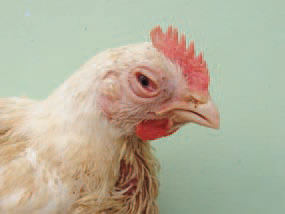
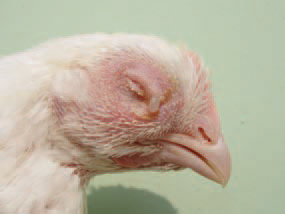
237.238.Swollen head syndrome (SHS) is a complicated infection in broilers and broiler breeders, where the primary aetiological agent is an avian pneumovirus (APV) and the secondary -usually E. coli; it is characterized by respiratory and nervous signs. In broilers chickens, SHS is generally seen after the 4th week of life. The first clinical signs are sneezing, coughing, rales and conjunctivites. A profuse tear secretion, reddened conjunctivas and a characteristic oblong almond-like shape of eyes are observed. The inflammatory exudate is initially transparent, but afterwards becomes opaque.
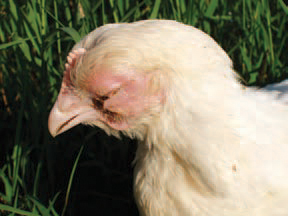
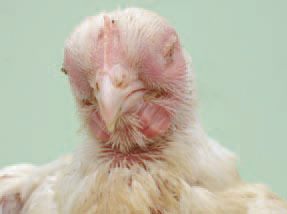
239.240.Subcutaneous oedemas in the head region, involving unilaterally or bilaterally the periorbital sinuses and the mandibular space, are emerging. A seasonal pattern in the prevalence with peaks during spring and summer is observed.
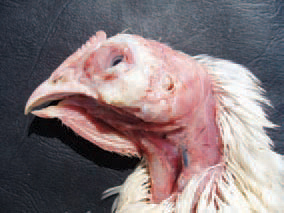
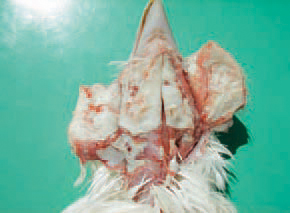
241.242.After removal of the covering skin, deposits of serofibrinous exidate are observed. APV is a virus from the Paramyxoviridae family. The pneumovirus is present in respiratory secretions and discharges. It survives for a long time in cold and wet environment. E. coli follows the APV infection of the upper respiratory tract. The triggered inflammatory response results in accumulation of exudate in the subcutaneous tissue. In many instances, a croupous pneumonia develops at a later stage consequently to conta-mination with other pathogens.
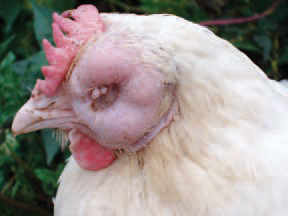
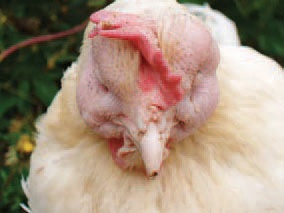
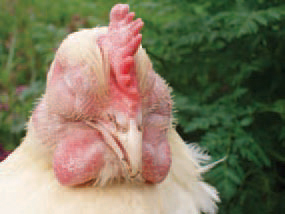
243.244.245.SHS in broiler breeders is usually encountered around or after the peak egg laying period only in female birds. Unilateral or bilateral swellings of the head, affecting the periorbital sinuses, the mandi-bular space and the wattles are seen. The conjunctiva and the mucous membranes of sinuses are considered to be the entrance door of the infection. A unique cytotoxin has been identified in many E. coli isolates in SHS that could be involved in the pathogenesis of the disease. The inflamed by the virus infection conjunctiva-associated lymphoid tissue is the site where the bacterium enters the subcutaneous tissue.
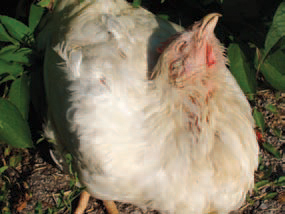
246. Frequently, nervous signs are observed in broiler breeders (opisthotonus, torticolis) due to inflammatory processes in pneumatic skull bones and the middle ear.
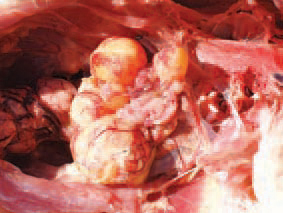
247.In laying hens, the ovaries are affected in many instances (sero-fibrinous oophoritis), resulting in reduced egg production. The diagnosis is based upon the distinctive clinico-morphological signs. SHS should be differentiated from Mycoplasma and Pasteurella infections and the skin form of aspergillosis. Prevention - improvement of the microclimate of premises, use of live and killed vaccines.






